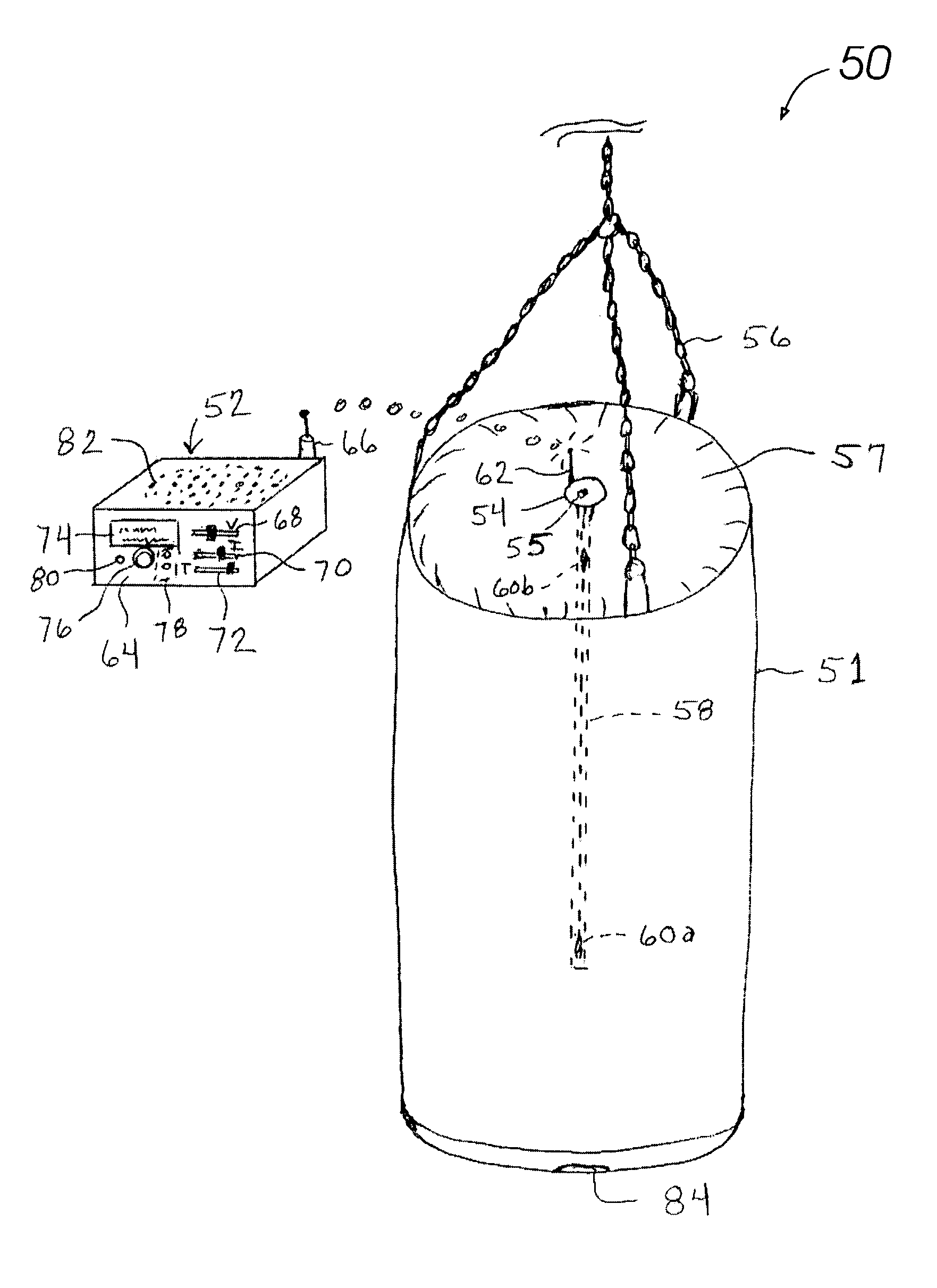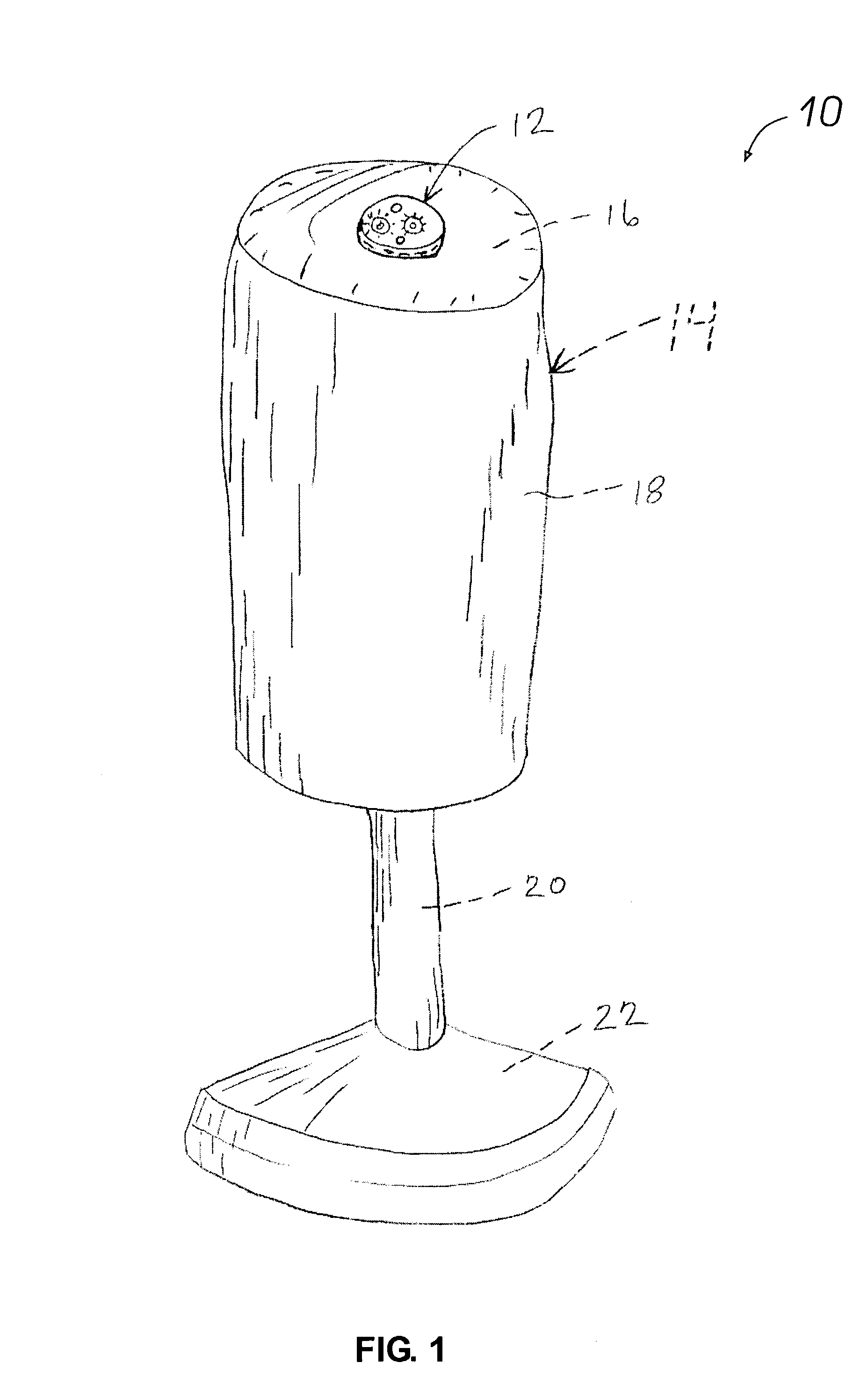However, these devices typically provide measurement data in a statistical form, or in a form that is otherwise unsuitable for use by
athletes during daily training and in a form that the athlete can readily adapt to.
Athletes in a number of athletic fields are subject to these feedback limitations and thereby are unable to maximize their performance.
In using the current forms of these sparring devices, the user does not get a regulated workout, nor do they get sufficient feedback to provide motivation and assure maximum benefits.
However, with sparring, the user can't readily set the force or easily count the number of repetitions, thereby they have no way to determine how much power they have expended during the workout.
It will be appreciated that a weight training
machine would be far less effective if the weight lifted changed each time and user didn't know what the amount of weight being lifted, and was also unable to count the number of repetitions.
Furthermore, sparring with a "striking bag" is often considered boring in relation to active competitions, or sparring against an actual sparring partner.
Although many sports enthusiasts occasionally hit a great shot they find it very difficult to arrive at a consistent swing which produces consistently good results.
With approximately twelve percent of the
population involved in the sport of golf alone, it is not surprising that the market is getting very crowded for swing improvement devices.
However, the available devices generally offer rather marginal help in "grooving" a swing for golf, tennis, baseball, and other swing related sports, for a number of reasons.
If that is ignored, the user may be trying to reconfigure their
stroke to suite the
machine, and actually can
train toward a sub optimal goal that may provide worse results than their current swing patterns.
Feedback generated by the devices may be of a nature that the user can not readily relate to in order to change aspects of the swing in moving toward an optimal swing.
For example, a club "breaking" sometime during the swing may infer that the swing is not smooth but it provides little information to allow the user to correct the swing.
Furthermore, a number of the devices are directed at laboratory use, or are otherwise too cumbersome or expensive to be utilized by average persons participating in the sport.
A number of drawbacks exist with these current machines.
The use of weight stacks result in a bulky unit that is difficult to transport.
Weight stacks still
pose a safety
hazard as fingers or hands may be crushed in the equipment.
Another risk is that a person that becomes tired, pulls a
muscle, or is otherwise fatigued can drop the stack wherein the bar into which their force is directed can strike them or cause them to hyperextend.
Furthermore, the use of weights generally restricts force application to a single direction of resistance.
The
transfer function of these devices is not conducive to an exercise regime and such systems are rarely made today as they are considered "cheap".
Others have put forth "bow-style" mechanisms and other force inducing means, however, these suffer from many of the problems associated with weights, such as inability to properly register work input, and they
pose additional problems.
Yet the use of weights is not exciting as the user is provided little feedback and the weight lift itself unspectacular.
Finally, the incorporation of measurement equipment to track the workout is difficult as the time, distance, weight, and character of each lift would need to be measured.
Many workout facilities are subject to wide variations in ambient
noise as athletic activity waxes and wanes.
(For example, small inexperienced users aren't able to strike with as much force as larger more experienced individuals.
These personifications may be from serious to comical.
The device could be less preferably configured with a
single axis to provide a slightly less expensive form of swing feedback, however, it will be readily appreciated that many swing problems result from "
out of plane" motions which would not be properly registered in a single physical dimension.
The many training devices that exist for swing training do not provide the immediate
continuous feedback required to establish a
biofeedback training loop.
Storing sound patterns is not as useful in a
constant movement sport such as tennis, as it is unknown which movement or swing is desired.
The use of these systems in a scaled down form would be overly costly and prone to failure.
However, in traditional weightlifting the slow force movement benefits are lost, or diminished, if the
muscle group is worked rapidly and many neophytes tend to "bounce" the weights to increase their apparent strength as judged by the
mass being operated on.
 Login to View More
Login to View More  Login to View More
Login to View More 


